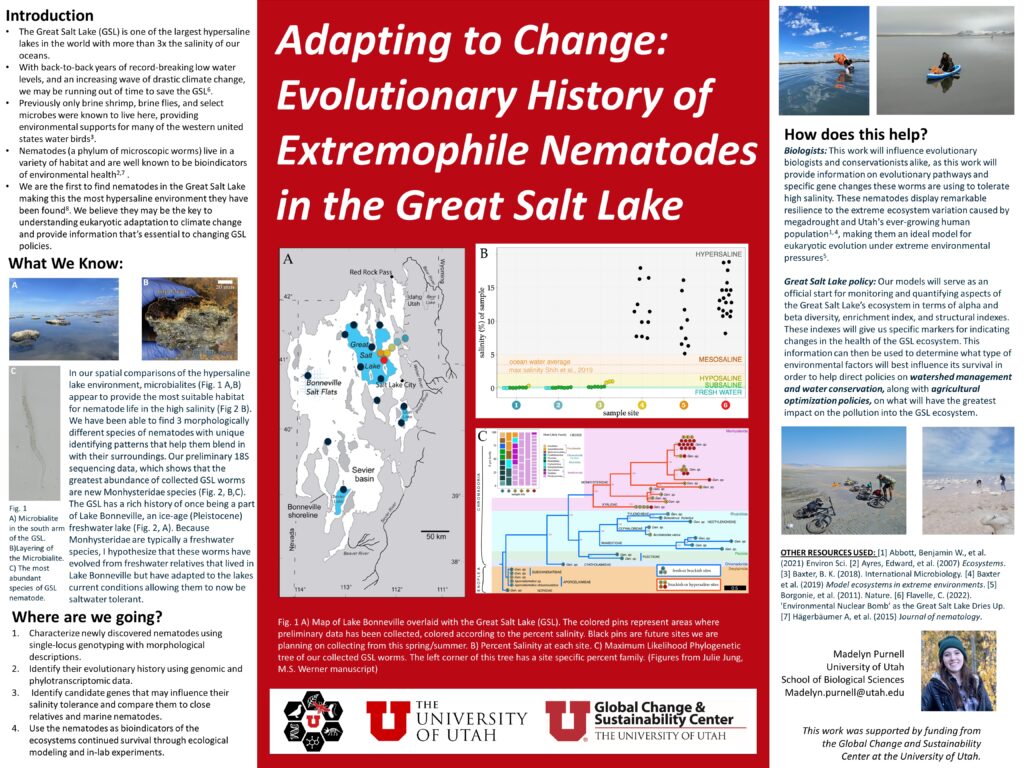Adapting to Change: Evolutionary History of Extremophile Nematodes in the Great Salt Lake
Bio
I am currently a Graduate Student working with Dr. Michael Werner. I am researching past climate change on the GSL and its effect on community structures and gene response in model eukaryotic organisms. I came to the University of Utah after completing an undergraduate degree in Bioinformatics at Brigham Young University. I am passionate about educating about how climate change is affecting our ecosystems and what we can do about it.
Abstract
Nematodes (microscopic worms) survive in nearly all marine and terrestrial environments. Due to their necessity in various ecological functions, nematodes are used by ecologists as bioindicators to evaluate environmental stress. The Great Salt Lake (GSL) is one of the largest hypersaline ecosystems in the world, with only brine shrimp, brine flies, and select microbes able to survive its salinity. Recently, we obtained the first evidence of nematodes living in the GSL (manuscript in prep.). With salinity measuring more than three times oceanic averages, these nematodes display remarkable resilience to the extreme ecosystem variation caused by megadrought and Utah's ever-growing human population, making them an ideal model for animal evolution under extreme environmental pressure. Our current projects are to: (I) characterize these newly discovered nematodes, (II) identify their evolutionary history, (III) identify candidate genes that may influence their salinity tolerance, and (IV) use nematodes as bioindicators of the GSL’s continued survival.

